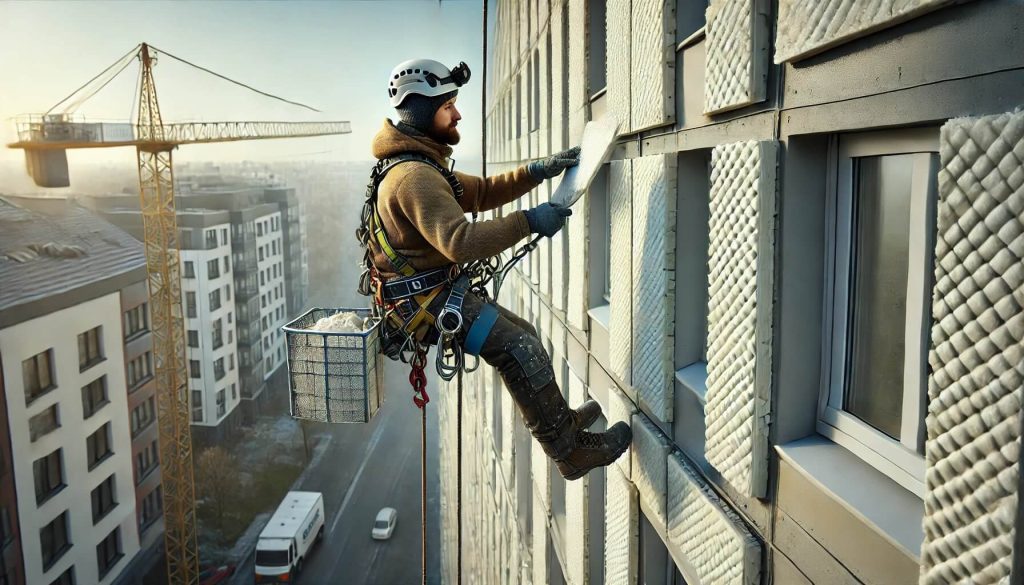Repair and insulation of facades in autumn and winter: what should be considered?

During the cold season, repairing and insulating facades becomes a priority for owners of private houses and apartment buildings. The fall-winter period is an opportunity to improve the energy efficiency of the building and prepare it for the harsh conditions of winter. Insulating the walls from the outside allows you to reduce heat loss, provide protection from freezing and reduce heating costs.
Features of facade insulation in winter
Carrying out external insulation of facades in winter requires the use of special technologies. For example, for the installation of insulation, adhesive mixtures resistant to low temperatures are used. It is also important to pay attention to moisture protection, so that the insulation retains its properties throughout the entire period of operation. Companies that perform such work often use industrial methods, which allows you to do without installing scaffolding and significantly reduce the time of the project.
For successful realization of such tasks, it is important to carefully choose a contractor. A reliable team with experience in high-rise work will ensure quality insulation and safety. Recommendations on choosing contractors can be read in the article How to choose a company for high-rise works? Tips for choosing a contractor.
Advantages of winter insulation
- Savings on heating. Insulating the walls from the outside reduces heat leakage and lowers heating costs in winter.
- Protection against freezing. High-quality facade insulation prevents the formation of ice bridges and protects structures from destruction.
- Energy efficiency. Modern insulators provide reliable protection for the building and increase its durability.
What materials to choose for insulation in winter?
For the cold season are suitable:
- Mineral wool – retains thermal insulation properties during temperature fluctuations and provides ventilation of the walls.
- Polyurethane foam – material resistant to moisture and frost, ideal for external insulation.
- Styrofoam – light and easy to install, requires additional protection from external factors.
The main points when insulating facades in winter
- Surface preparation. The facade should be cleaned and all damage should be repaired.
- Use of winter mixes. These materials provide reliable fastening of insulation even at low temperatures.
- Waterproofing. Protection from moisture is necessary to extend the life of the insulation and preserve its properties.
Conclusion
Properly performed facade insulation in the fall and winter period not only increases energy efficiency, but also extends the service life of the building. Compliance with all technological nuances and the use of quality materials guarantee comfort in the house for many years.
